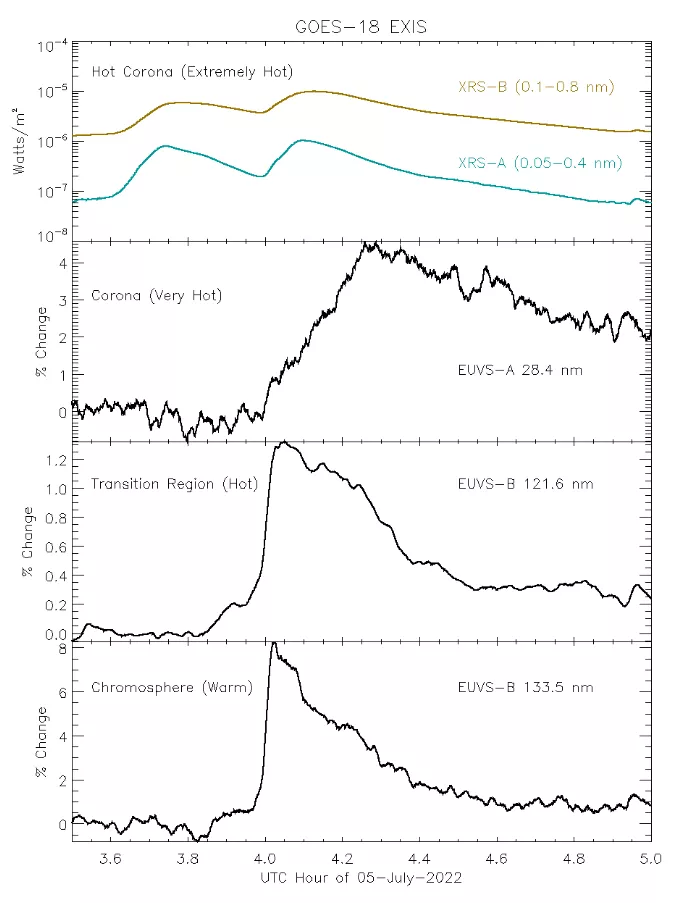The Extreme Ultraviolet and X-ray Irradiance Sensors (EXIS) onboard NOAA’s GOES-18 satellite, which launched on March 1, 2022, are powered on, performing well, and observing the sun.
EXIS measures light from the sun in extreme ultraviolet and soft X-ray wavelengths and identifies the magnitude and location of solar flares. Solar flares are huge eruptions of energy on the sun and often produce clouds of plasma traveling more than a million miles an hour.
When these clouds reach Earth, they can cause radio communications blackouts, disruptions to electric power grids, errors in GPS navigation, and hazards to satellites and astronauts. Additionally, variations in the solar X-ray and ultraviolet light that is absorbed by the Earth's upper atmosphere have big impacts on radio communications and satellite drag.

On July 5, 2022, EXIS observed a pair of moderate flares that erupted on the sun between 3:30 and 4:30 UTC. EXIS has two main sensors, the X-Ray Sensor (XRS), which measures soft X-rays, and the Extreme Ultraviolet Sensors (EUVS), which measure extreme ultraviolet light. The two flares appeared differently near Earth and demonstrate why EXIS observes light from the sun at multiple wavelengths. In the top panel of the above figure, the two peaks show that XRS observed both flares.
However, EUVS only observed the second flare, which is the peak in the lower panels. Because the first solar flare occurred on the edge of the visible disk of the sun, most of the extreme ultraviolet emissions, which come from lower parts of the solar atmosphere, were blocked by the sun's atmosphere. The second solar flare erupted closer to the center of the disk and emissions from it were visible by EXIS in orbit around Earth. Because the second flare had energy across a broader range of wavelengths at Earth, the second flare was more impactful to Earth’s atmosphere and space environment than the first flare.
In addition, the time evolution of the second flare varied between the wavelengths. This is because each curve shows light emitted by different molecules from different layers of the solar atmosphere that range in temperature from ~10,000 K in the chromosphere to millions of K in the corona.
EXIS, with its multiple sensors, can observe and quantify the difference between the light from solar flares and help determine in real-time whether the flares will affect us on Earth.
GOES-18 is currently undergoing post-launch testing and checkout of its instruments and systems. After GOES-18 is assigned the operational role as NOAA’s GOES West satellite in early 2023, EXIS data will provide forecasters at the NOAA’s Space Weather Prediction Center with early indications of impending space weather storms so they can issue alerts, watches and warnings.
Data from GOES-18 during the post-launch testing phase should be considered preliminary and non-operational.